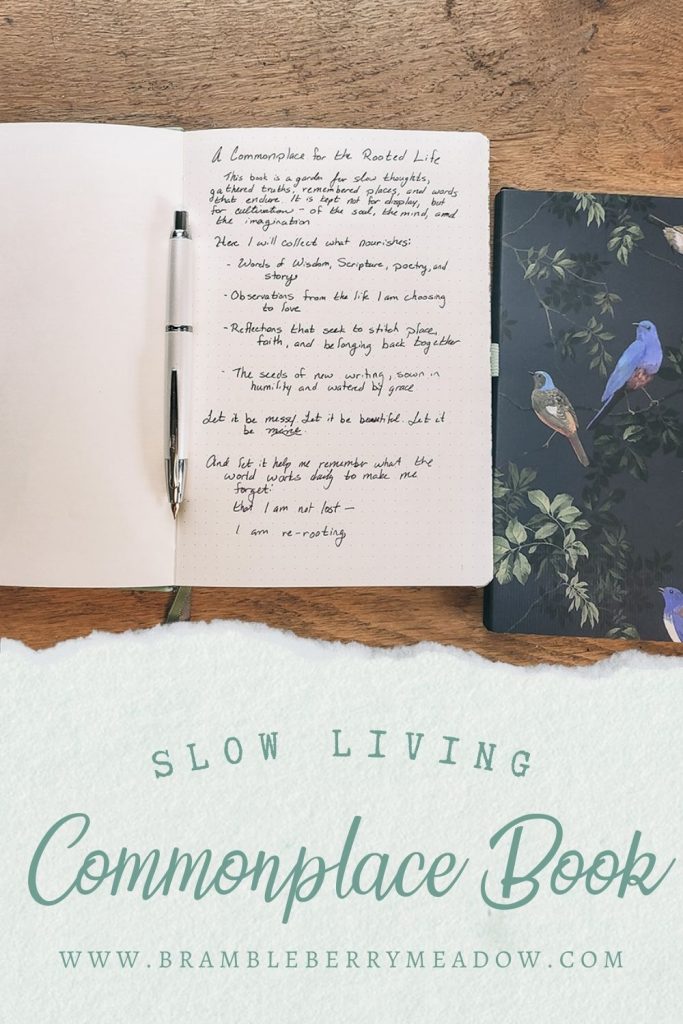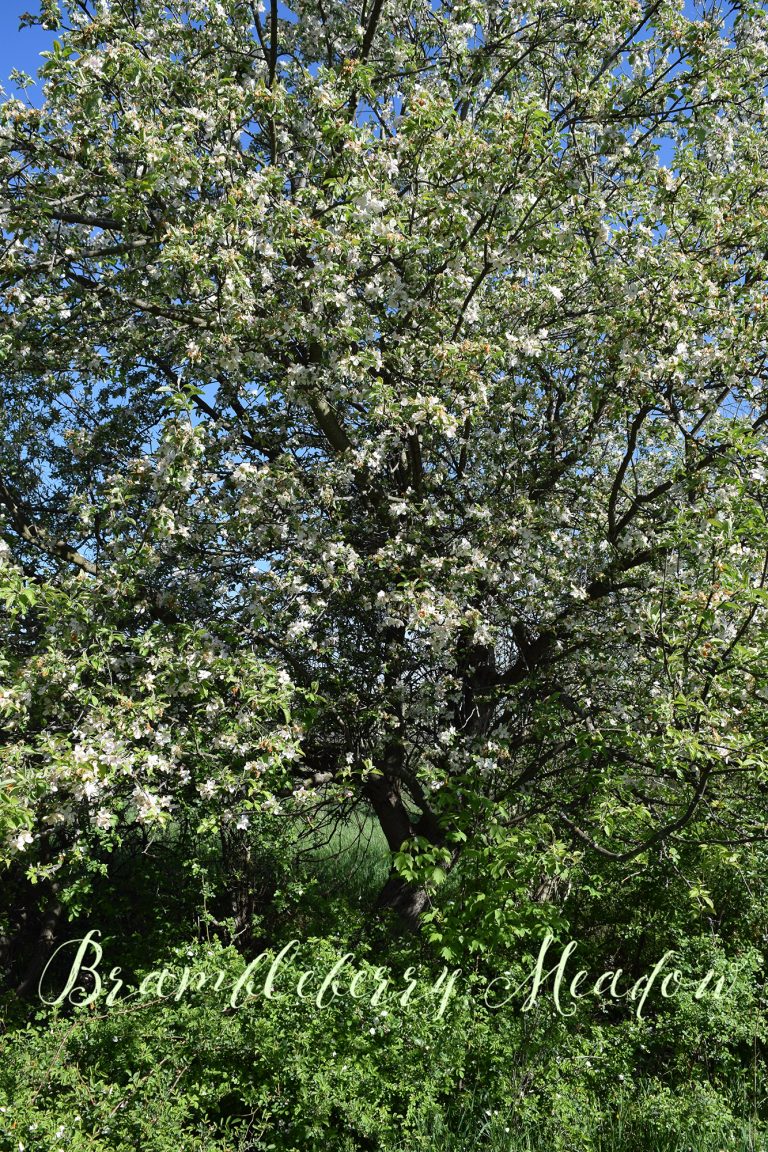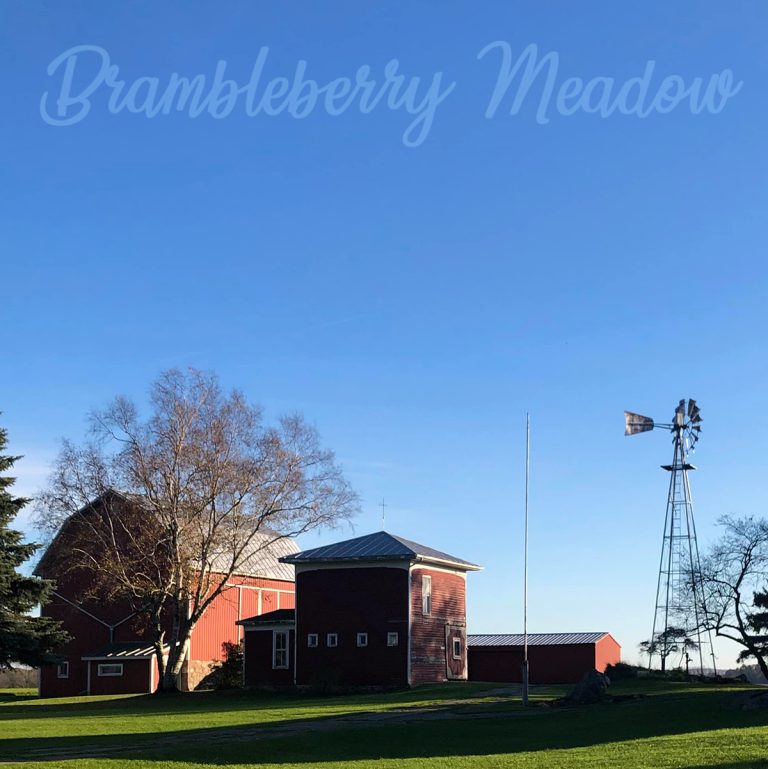Making a Slow Living Commonplace Book
If you subscribe to my e-mail newsletter, you may have noticed that it’s entitled “A Brambleberry Commonplace Book.” Are you familiar with what a commonplace book is?
A commonplace book is a personal notebook or collection where individuals record quotes, ideas, observations, and excerpts from various sources, organized for future reference or inspiration. It serves as a repository of knowledge and reflections, often categorized by themes or topics, used historically by scholars, writers, and thinkers to capture and revisit meaningful information.
It’s a very useful thing to have. And, you all know my penchant for beautiful (non-digital) tools. The e-mail list is great, but a physical commonplace book (or more than one) is something I’ve been meaning to make.
First, let’s talk about the actual materials. You certainly can make a commonplace book with a ball point pen and a $0.99 composition book from the local big box store.
\You also know that’s not what I did.
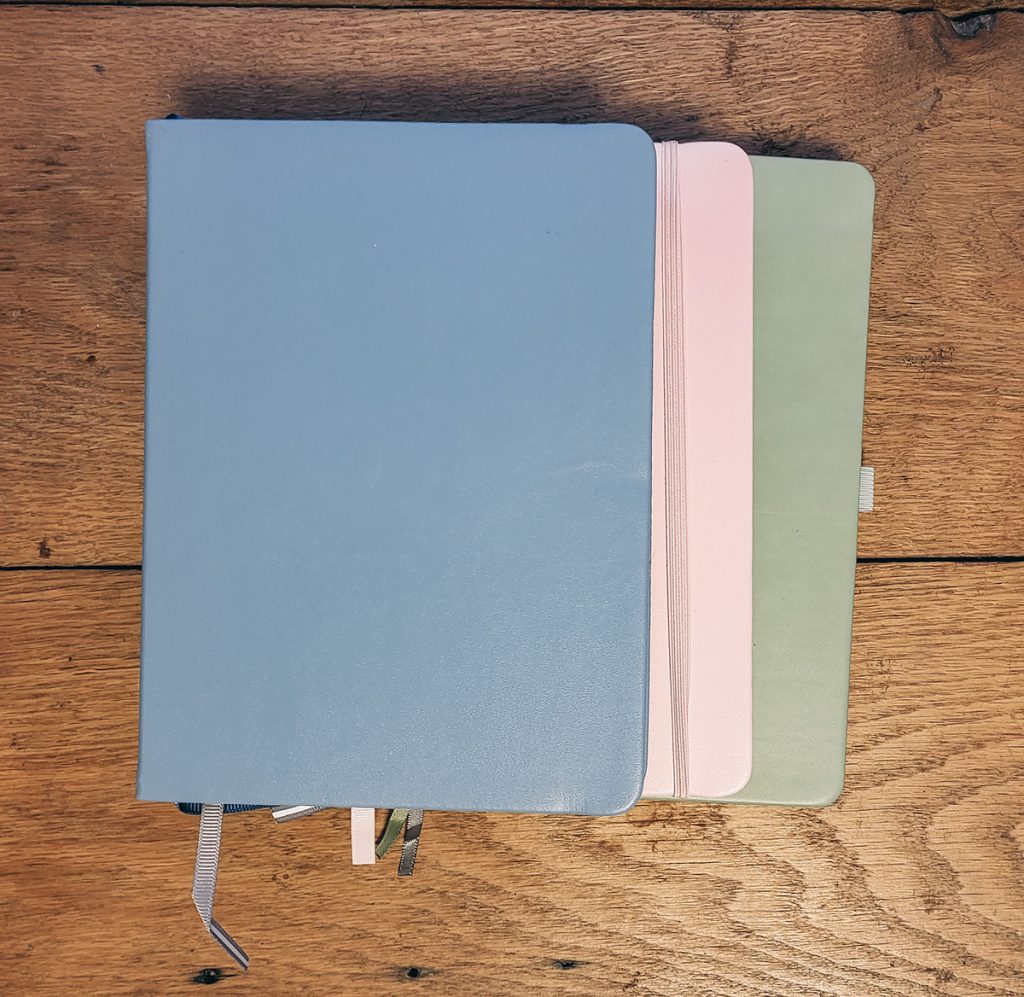
I recommend a dotted journal, with paper that’s at least 100 gsm. (That’s grams/sq meter – a measure of weight. Higher is better). Dotted, because that will make it easier to be a little flexible, and maybe even sketch from time to time. Heavy paper so that you don’t have to worry about bleed-through. I do have a couple of journals from one of the big craft stores with paper that is a little lighter, and that has been a bit of an issue. Numbered pages are an added bonus, especially if you want to add an index.
I’m also a sucker for fountain pens. With the fancy, colored, shimmer inks. A commonplace is a great way to indulge in inks that might not be appropriate for filling out forms or other purposes. I get most of my pens and inks from Goulet Pens. No, I don’t have any of the $200 pens. Even their more modest pens are excellent tools. Just make sure the pen has a converter, so you can use whichever inks you like. My selections for my commonplace books included Lamy Blackberry, which is a dark purple with a green shimmer, Ferris Wheel Press’s Blue Revelry, which is a dusty blue with a green/pink dichromic shimmer, and Henry David Thoreau, which is a teal ink with a wine shimmer.

Finally, it’s helpful to create some dividers, so that the commonplace book has sections. For this, I used washi tape, folded over the edge of the first page of each secion. Washi tape is a little harder to lay hands on. The big box craft stores have a few rolls. If you’re lucky enough to have a stationery store nearby, check there. Otherwise, there are the usual online sources. Amazon and Etsy, as much as I hate to say, are probably your best bets.
The categories you choose to use to divide your commonplace book are entirely up to you. I have a couple of them, one for poetry specifically, and two others for writing.
A commonplace book is a reflection of your life, so its categories should hold what you cherish. Below are some ideas inspired by the slow, rooted, creative spirit of our Brambleberry community. Pick a few that resonate, or invent your own. I’ve suggested page counts for a 200-page journal, but adjust as you see fit.
1. Hearth & Home (30–40 pages)
Capture the warmth of your daily life. Jot down favorite recipes (like that blackberry jam we made last summer), tips for preserving the harvest, or ideas for cozy home rituals—like lighting candles for evening prayers. This is also a place for quotes about home, like Mary Oliver’s lines about love and ordinary moments.
2. Garden & Wild (30–40 pages)
Document your connection to the earth. Sketch your garden layout, note planting dates, or describe the wildflowers you saw on a walk. Include tips from other gardeners, like how to companion-plant marigolds with tomatoes, or quotes from Wendell Berry about soil and stewardship. Even if your “garden” is a balcony pot, this section holds your love for growing things.
3. Craft & Making (20–30 pages)
Save ideas for your hands-on projects. Write down knitting patterns, sewing tips, or plans for a hand-carved wooden spoon. Include sketches of quilt designs or notes on natural dyes from foraged plants. This is also a place for inspiration, like a phrase from a craft book that reminds you why making matters.
4. Reflections & Wonder (40–50 pages)
This is your space to pause and ponder. Write about what stirs your heart—a sermon that lingered, a conversation with a neighbor, or a quiet moment watching the stars. Jot down questions about faith, gratitude lists, or reactions to a book you’re reading. This section holds the “why” behind your days.
5. Seasons & Traditions (20–30 pages)
Mark the rhythms of the year. Record how you celebrate solstices, harvests, or holy days. Note family traditions, like making gingerbread in December, or seasonal observations—the first frost, the return of the robins. Include poems or songs tied to each season’s spirit.
6. Words & Wisdom (20–30 pages)
Collect words that move you. Copy quotes from poets, novelists, or Scripture that feel like guideposts. Add proverbs, folk sayings, or even snippets of overheard conversations at the farmer’s market. This is your treasury of language to spark your own writing or simply to savor.
7. Dreams & Plans (10–20 pages)
Dream a little. Sketch ideas for a future homestead, a writing project, or a pilgrimage to a place that calls you. List goals, like learning to bake sourdough or visiting a nearby orchard. This section is for hopes that may grow into reality—or simply warm your heart.
Carry the book with you, so that you can jot down ideas as they come to you. Keep it open next to you while you read, to make it easier to transfer favorite quotes.
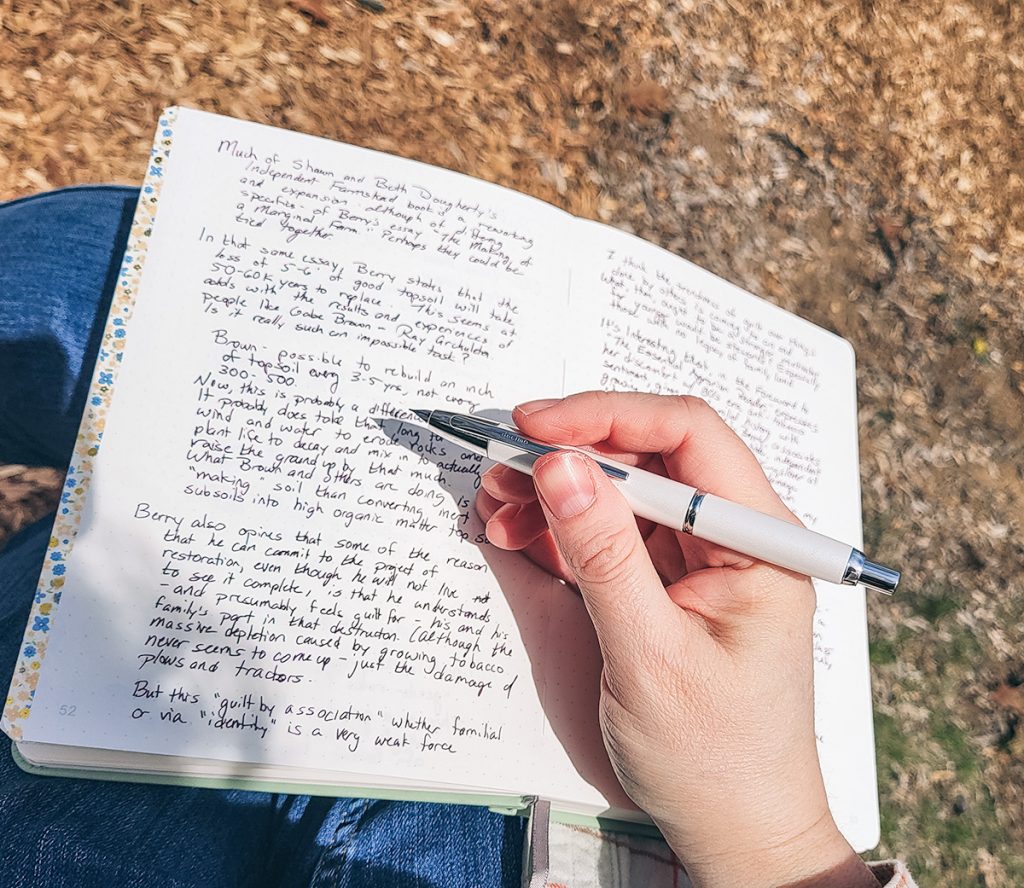
For Brambleberry readers who find joy in the alchemy of the kitchen, this commonplace book is a place to gather recipes, techniques, and stories tied to cooking, preserving, cheesemaking, dairy, and baking. Divide a 200-page dotted journal into these sections, using washi tape to mark each one, and let your fountain pen dance across the pages with notes that capture the heart of your culinary life.
1. Recipes & Variations (40–50 pages)
Record your go-to recipes, from sourdough bread to blackberry jam. Include variations (e.g., adding rosemary to shortbread) and notes on what worked or didn’t. Jot down family heirlooms, like Grandma’s pie crust, or new experiments inspired by a farmers’ market haul.
2. Preserving & Fermentation (30–40 pages)
Document your preserving adventures—canning, pickling, or fermenting. Note ratios for brines, times for water-bath canning, or tips for perfect sauerkraut. Include seasonal guides (e.g., “July: peach chutney”) and troubleshooting (e.g., “Why did my pickles soften?”).
3. Cheesemaking & Dairy (20–30 pages)
Capture the magic of turning milk into cheese, butter, or yogurt. Record recipes (e.g., chèvre with herbs), equipment lists, or observations about milk types (cow vs. goat). Include quotes from cheesemaking books or tips from local farmers.
4. Baking Notes & Techniques (30–40 pages)
Save your baking wisdom—kneading tips, proofing times, or the perfect pie crust ratio. Note flour brands, oven quirks, or seasonal bakes (e.g., pumpkin scones in fall). Include sketches of bread scoring patterns or inspirational quotes about bread’s soul.
5. Seasonal Ingredients & Foraging (20–30 pages)
Track what’s in season or foraged—wild ramps in spring, elderberries in late summer. Note where you found them, how you used them (e.g., ramp butter), or recipes to try. Include seasonal charts or quotes from foragers like Euell Gibbons.
6. Kitchen Reflections & Stories (20–30 pages)
Reflect on what the kitchen means to you. Write about a meal that brought your family together, a preserving mishap that taught you patience, or the smell of bread baking on snowy days. Jot down gratitude for simple ingredients or musings on food’s role in community.
7. Resources & Inspiration (10–20 pages)
Collect references that fuel your culinary passion. List books (e.g., The Art of Fermentation), blogs, or local suppliers (e.g., “Maplewood Farm for raw milk”). Note workshops, YouTube channels, or quotes from chefs that inspire you to keep creating.
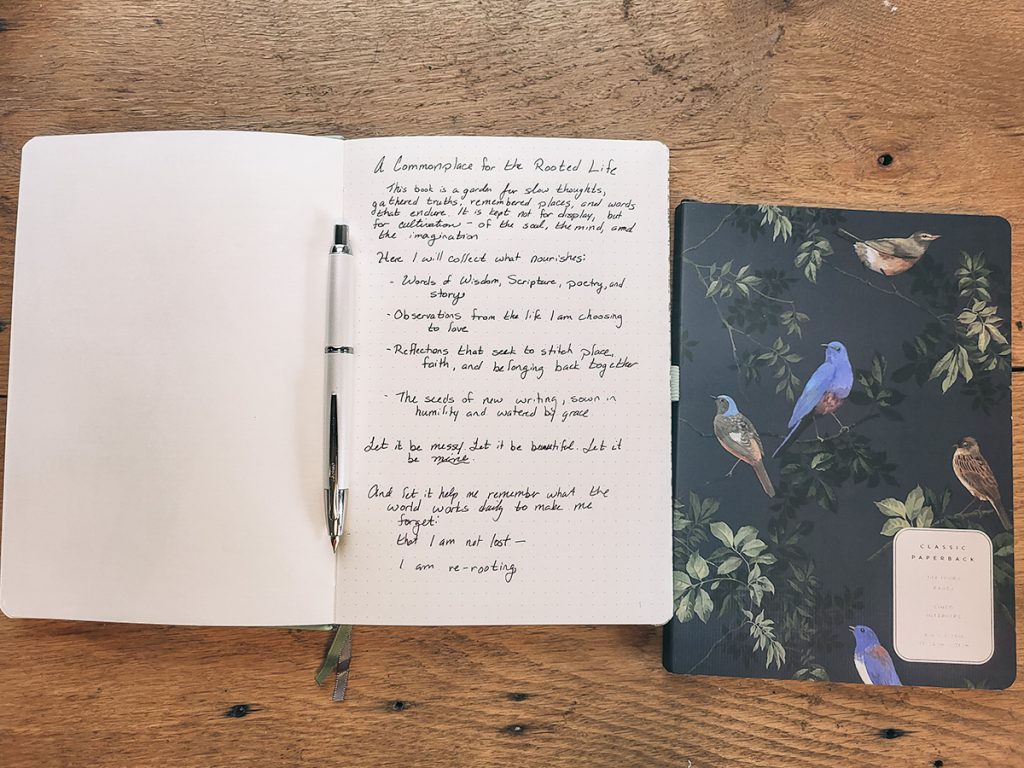
Your slow-living journey is calling. Grab that dotted journal, press strips of washi tape to mark your sections, and let your fountain pen—shimmering with ink like dew on brambles—meet the page. Jot a recipe, a garden note, or a quiet prayer. This commonplace book is your meadow, a place to root your days in the rhythms of earth and heart. Start small, with one entry: the scent of fresh bread, the feel of wool, a moment of wonder. Share your first page with #BrambleberryCommonplace, and let’s grow this life, together.
This month’s upcoming Brambleberry newsletter is bursting with prompts to fill your journal—think garden sketches, hearth recipes, or starlit reflections. Don’t miss out! Sign up below in the footer to let these ideas bloom in your slow-living meadow.

